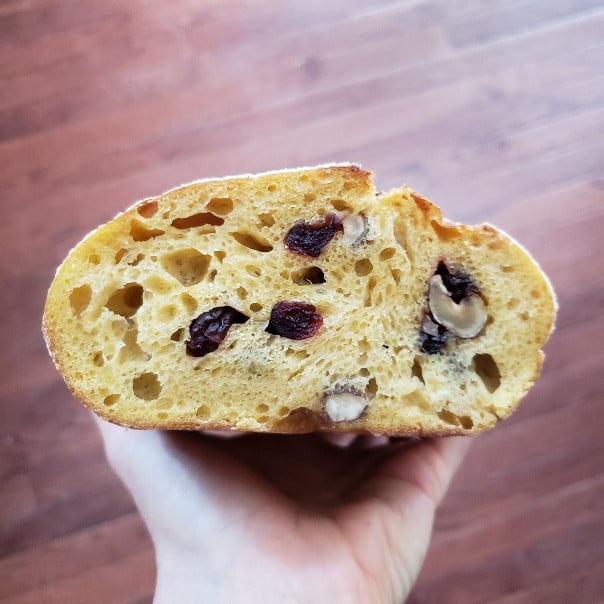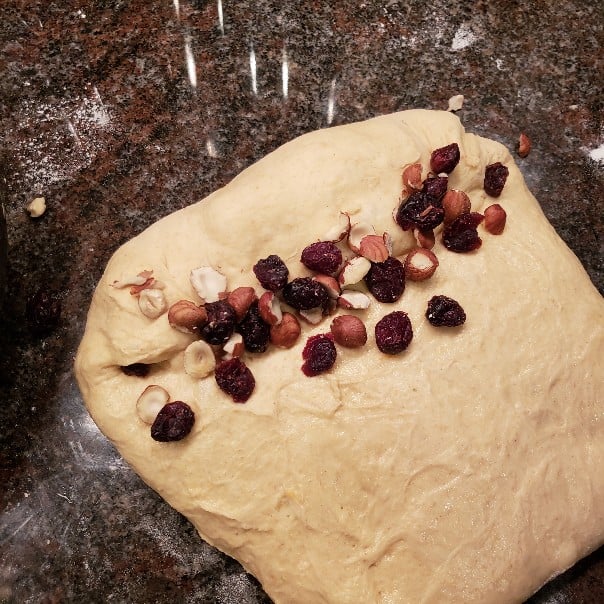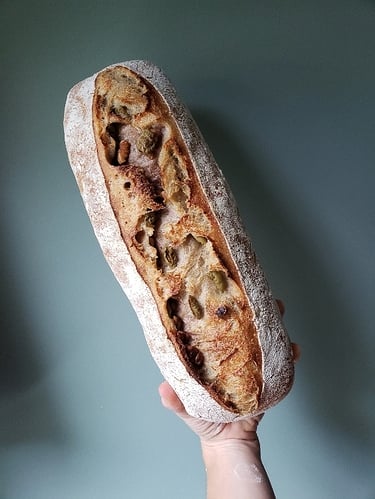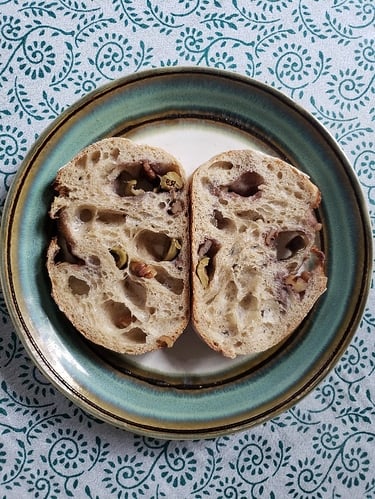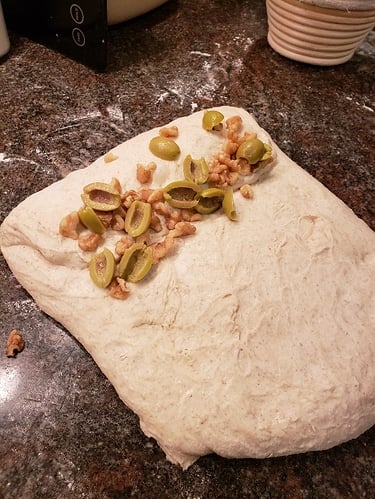I’m going to go backward through your questions and give you a whole heap of math at the end that is basically unnecessary for this recipe (such small differences) but useful if you are interested in converting other recipes and understanding baker’s percentages. I’m happy to clarify anything that you have questions on.
Rubaud mixing video can be seen here, scroll down a bit. https://breadtopia.com/sprouted-wheat-sourdough-ciabatta/
The product page for the clay baker in the Breadtopia store currently says 500F max. Maybe we’re looking at different pans? Perhaps @eric can chime in on max temp. I have two Breadtopia clay bakers and always preheat to 500.
1/4 tsp yeast is the typical substitute for 1/4 cup of active starter. The timing could still be different so keep an eye on your dough much more than the clock.
As for differing hydration, this recipe (unlike the ciabatta in the Rubaud video) doesn’t use a massive amount of starter, so you’re not losing much water by eliminating the starter.
Here is how you’d calculate it though:
Current Recipe
450g flour
335g water
75g starter (100% hydration; half water 37.5g, half flour 37.5g)
8g salt
Current recipe hydration in conventional baker’s percentage:
(335/450)x100= 74.4% hydration
Actual hydration (incl starter): (372.5/487.5)x100= 76.4% hydration
Remove starter but arrive at 76.4% hydration for 450g flour:
(450x76.4)÷100= 343.8g water
You can do the same with the 8g salt but again not really necessary.
(8/487.5)x100= 1.64
Apply to 450g flour
(450x1.64)÷100= 7.38 g salt
Yeast Version of Recipe
450g flour
344g water
7.4g salt
1/4 tsp yeast
Google will get you to cups and tablespoons if you’re not using weight e.g. 1 cup water is 236.59g water though I’m pretty sure I’m not that precise in volume or weight of ingredients! 



